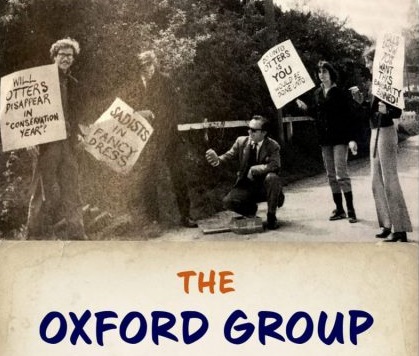Most Nonhuman Animal rights historians have heard tell of the mythical Oxford Group, a small group of Oxford philosophy graduate students, their partners, and a smattering of associated scholar-activists responsible for some of the first and most influential advances in modern anti-speciesist thought. Most Nonhuman Animal rights academics and activists, for that matter, are familiar with the work of Oxford star and movement ‘father’ Peter Singer. Yet, despite this notoriety, few are actually familiar with the inner workings of the group, nor the development of Singer’s work in context. What was it about Oxford that made this magic happen? What was it about the philosophical discipline at that time? What about the group dynamic itself? In The Oxford Group and the Emergence of Animal Rights, longtime Nonhuman Animal rights theorist Robert Garner and scholar-activist Yewande Okuleye bring substance to the hazy mythology surrounding the mid-20th century incarnation of Western Nonhuman Animal rights. Admirably, they do so before the knowledges and memories are lost to the ages, as the original members are well into their golden years with some having already passed.
The aim of this project is twofold. First, the authors seek to explore Michael Farrell’s sociological theory of collaborative groups. It is argued that such collectives pass through predictable stages and with particular characteristics that culminate in creative and innovative output that could only be possible as a result of the group membership. Members of the Oxford Group exemplified this magic formula with their multilayered entanglement and mutual inspiration. They ate together, lived together, protested together, and, of course, worked and studied together. Through many intimate conversations and key writing collaborations, a new understanding of Nonhuman Animal rights was developed, one that would go on to majorly transform advocacy organizations, campaigning strategy, public policy, and academic thought. For the most part, then, Farrell’s theory seems well suited to explaining the experiences and output of these pioneering anti-speciesists.
The second aim of the project is perhaps more interesting to the Nonhuman Animal rights community: Garner and Okuleye’s oral history method preserves precious theoretical and activist processes for future generations. In the fast-paced push for Nonhuman Animal liberation, too little time is reserved for recollection and taking stock. There is much to learn from these interviews, such as how to successfully contend with resistant institutions and unreceptive publics. We also learn how to take advantage of political opportunities as they arise such as the moral turn in the philosophical discipline, the democratization of the academe, and the success of the American Civil Rights movement.
These interviews also teach us about the many contributions of women thinkers, notably that of Brigid Brophy and Ros Godlovitch, both of whom had a huge influence on Singer’s work (culminating in his seminar Animal Liberation in 1975). Unfortunately, the history books frequently marginalize or erase women’s contributions, but Garner and Okuleye’s oral history approach allows women to speak for themselves (supported by their male allies who were there in the trenches with them and can vouch).
The Oxford Group will be of considerable importance to the Nonhuman Animal rights annals and presents a perfectly useful oral record of a highly endangered activist and scholarly history. Perhaps more importantly, it illustrates to activists and scholars alike the dramatic potential for a small group of people who click to move mountains.
